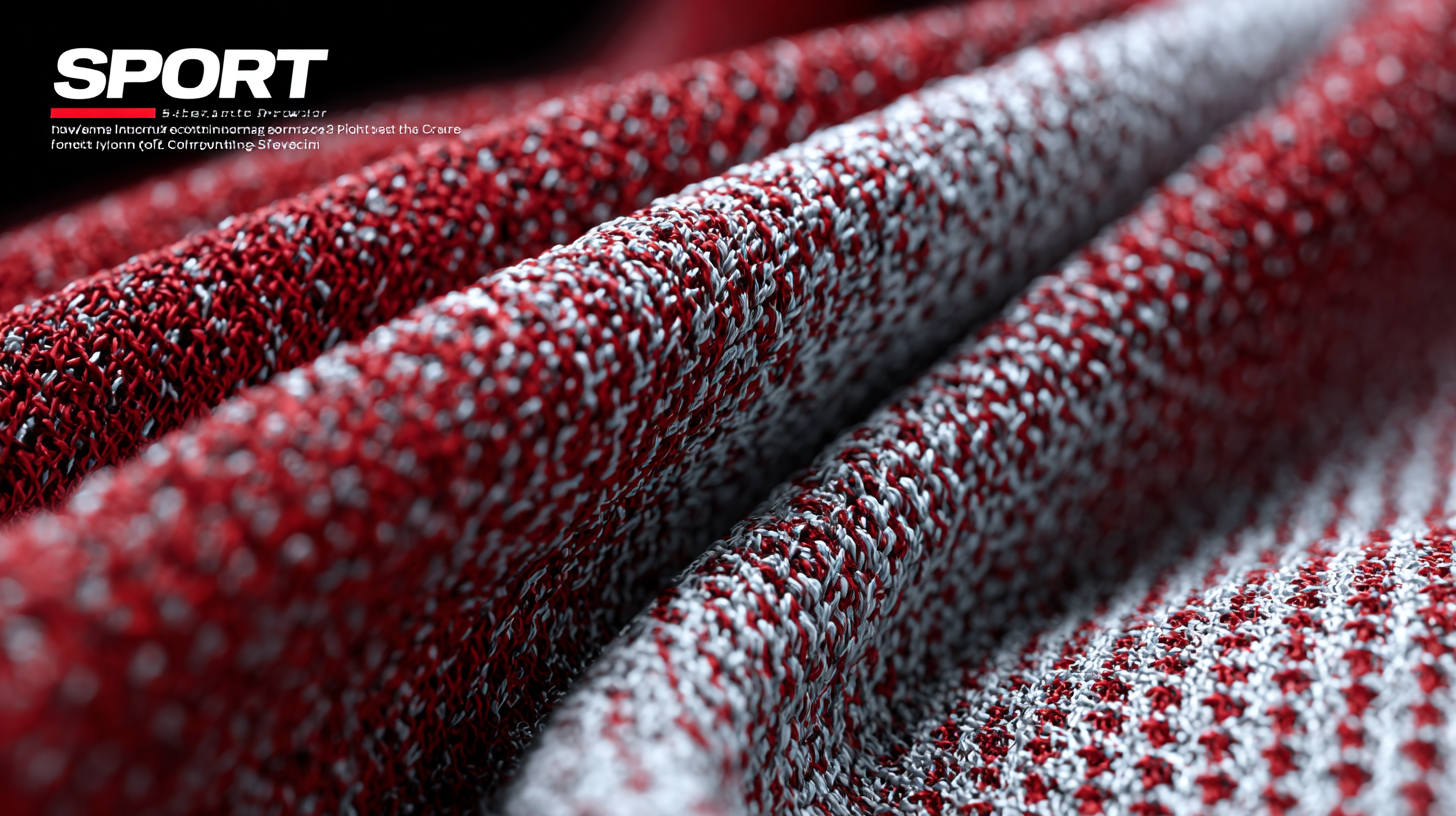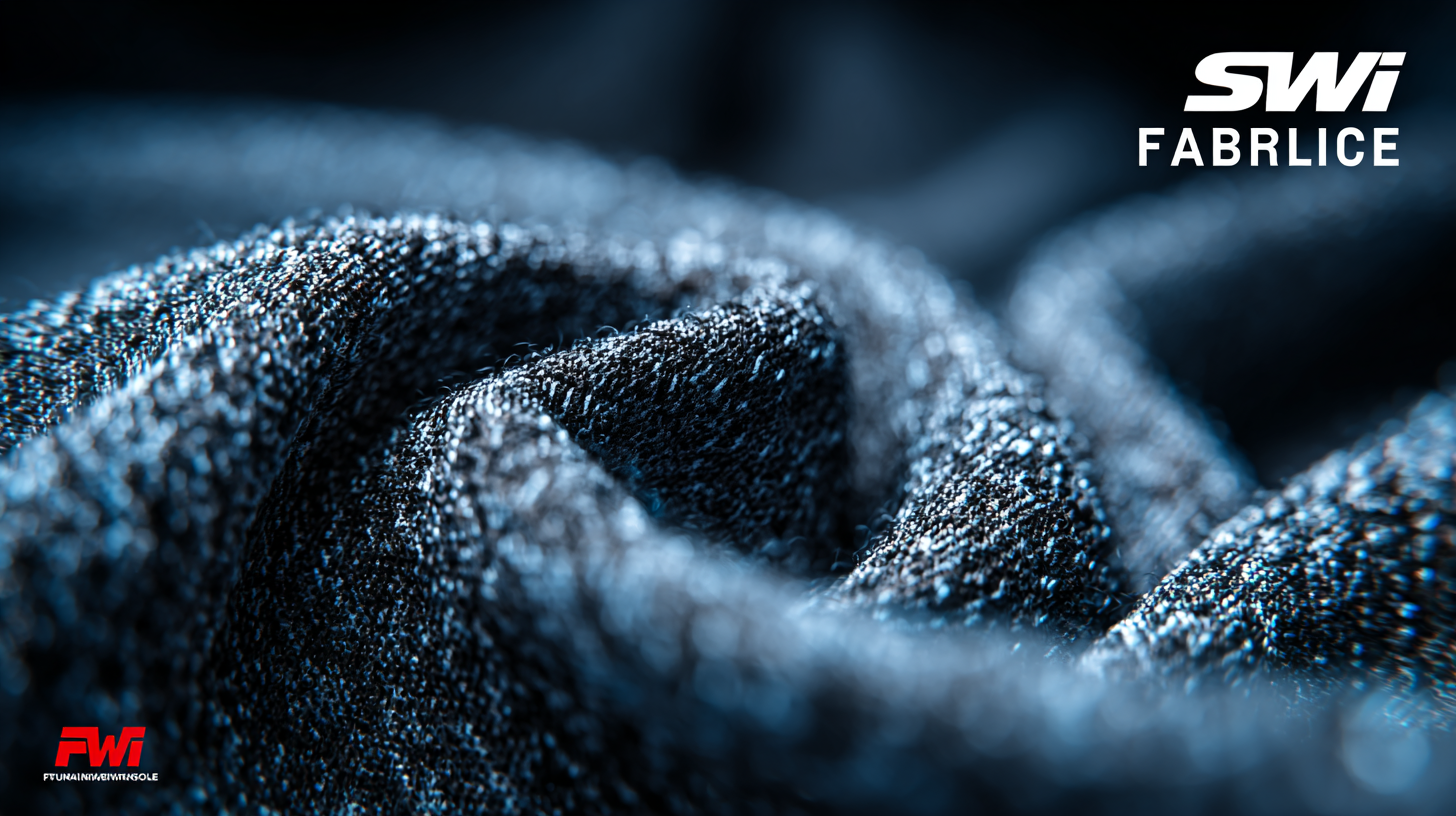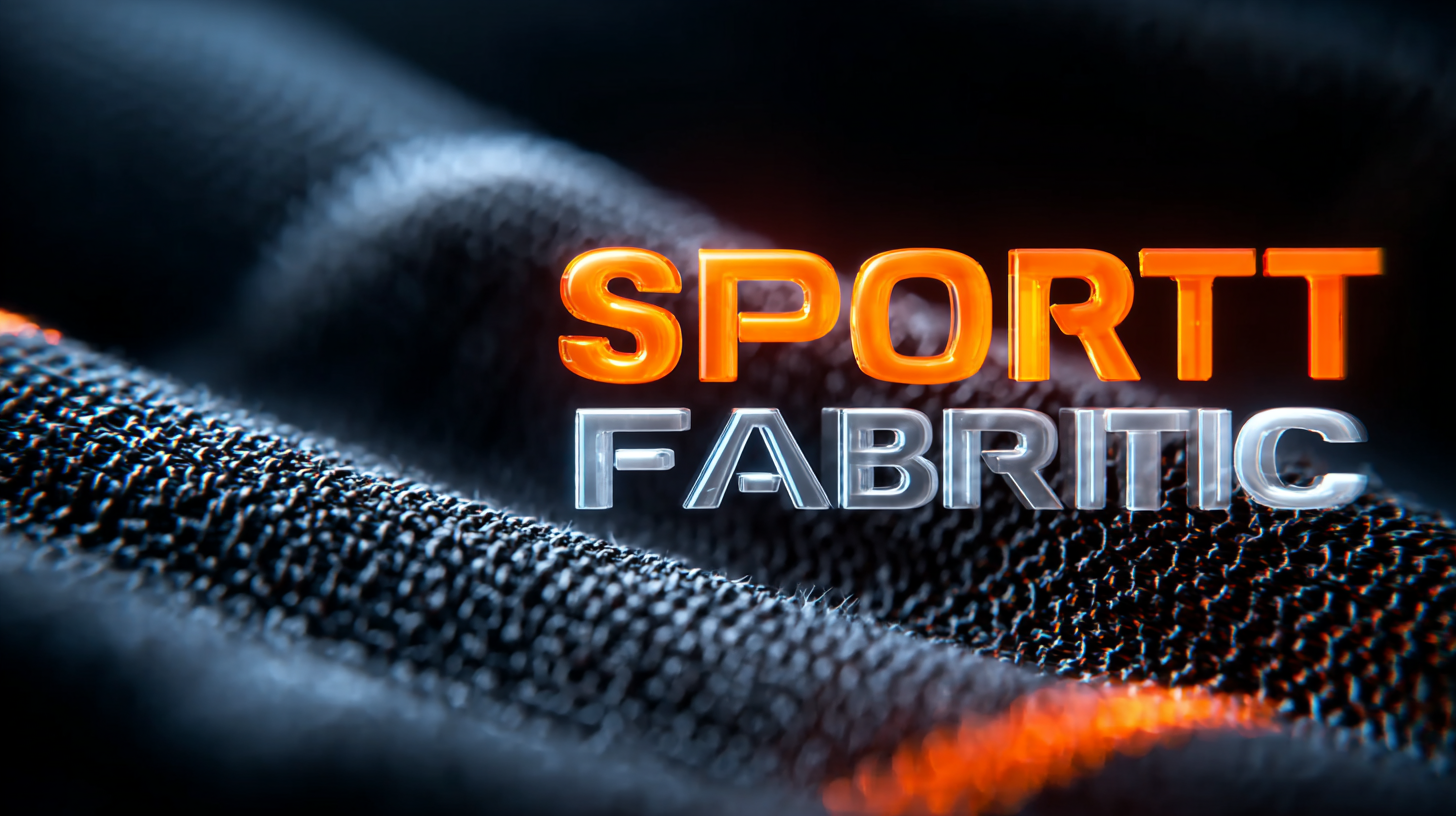In the ever-evolving landscape of athletic apparel, the demand for high-quality Knitted Sportswear Fabric remains pivotal. According to a report by Technavio, the global sportswear market is projected to grow by USD 249.24 billion from 2021 to 2025, with a significant portion attributed to advancements in fabric technology and sustainable sourcing practices. As consumer preferences shift towards more comfortable, functional, and eco-friendly options, knitted fabrics have surged in popularity due to their superior elasticity, breathability, and moisture-wicking properties.

This blog aims to provide an essential checklist for brands and manufacturers striving to source the best knitted sportswear fabric, ensuring they stay ahead of the competition while meeting the diverse needs of modern athletes.
As we approach 2025, the landscape of knitted sportswear fabrics is set to evolve dramatically, driven by innovations that prioritize sustainability, performance, and style. One key trend emerging in this realm is the development of eco-friendly materials that minimize environmental impact. Brands are increasingly opting for recycled fibers and organic materials, which not only reduce waste but also appeal to the growing consumer demand for sustainable options. These fabrics offer the same, if not superior, performance characteristics while aligning with ethical manufacturing practices.
Another significant trend to watch is the integration of advanced technology into knitted fabrics. Innovations such as moisture-wicking, temperature regulation, and even built-in UV protection are becoming standard features in sportswear. Manufacturers are experimenting with smart textiles that can monitor biometrics or provide feedback to athletes, enhancing their performance while ensuring comfort and safety. As we prepare our ultimate checklist for sourcing the best knitted sportswear fabric, these trends will be crucial for brands looking to stay competitive in a rapidly changing market.
In the evolving landscape of sportswear, the importance of sustainability cannot be overstated. Eco-friendly knitted fabrics are not just a trend; they represent a necessary shift in the textile industry towards minimizing environmental impact. Today’s brands face the challenge of sourcing materials that not only perform well but also align with eco-conscious values. Options such as organic cotton, recycled polyester, and Tencel are emerging as frontrunners, offering both durability and breathability while reducing carbon footprints.
Choosing sustainable materials is a deliberate process that requires brands to look beyond aesthetics and performance. It involves considering the lifecycle of the fabric — from sourcing and production to end-of-life disposal. Innovations such as closed-loop systems and biodegradable fibers are setting the stage for future developments. By prioritizing these eco-friendly choices, brands can contribute to a healthier planet and appeal to the growing demographic of environmentally-aware consumers who prioritize sustainability in their purchasing decisions. Knitted sportswear made from these materials not only enhances comfort and functionality but also champions a forward-thinking approach to fashion that resonates with the values of today's athletes and enthusiasts.
| Material Type | Sustainability Rating | Moisture Wicking | Breathability | Durability | Market Availability |
|---|---|---|---|---|---|
| Recycled Polyester | High | Excellent | Good | High | Widely Available |
| Organic Cotton | Medium | Good | Excellent | Medium | Moderately Available |
| Bamboo Fabric | High | Good | Good | Medium | Limited Availability |
| Tencel (Lyocell) | High | Excellent | Excellent | High | Emerging Availability |
| Hemp Fabric | High | Good | Medium | Very High | Growing Availability |
When evaluating knitted sportswear fabrics, understanding the performance characteristics that define 'the best' is crucial. Key parameters like moisture wicking, breathability, and durability significantly enhance athletic performance. For instance, a 2021 report by the Textile Institute revealed that fabrics with high moisture management properties can improve athlete comfort by up to 25%, directly affecting their performance in competitive scenarios.
Moreover, the stretchability and recovery of the fabric play a vital role in sportswear design. According to a 2022 study conducted by Market Research Future, consumers increasingly prefer fabrics with at least 20% spandex, allowing better movement and flexibility. Fabrics such as polyester and nylon blends continue to gain popularity due to their lightweight properties, reducing the overall weight of the garment, which is essential for sports like running and cycling.
Lastly, the environmental impact of knitted fabrics cannot be overlooked. A sustainable approach to sourcing materials is gaining traction; a report by Grand View Research in 2023 highlighted that eco-friendly textiles are projected to grow at a CAGR of 9.7% by 2030. This trend not only addresses consumer demand for sustainability but also enhances the overall marketability of sportswear products.
In the realm of knitted sportswear fabric production, quality control standards hold vital importance, particularly within the Chinese manufacturing sector which accounts for approximately 50% of the global textile output. According to a report by the International Textile Manufacturers Federation (ITMF), China produced over 55 million tons of textiles in 2020 alone, emphasizing the need for stringent quality protocols to ensure the robustness and sustainability of sportswear fabrics. Manufacturers must adhere to certifications such as OEKO-TEX® Standard 100, ensuring that the fabrics are free from harmful substances and safe for consumer use.

Furthermore, implementing advanced quality management systems is crucial for maintaining consistency in fabric performance. According to a 2021 study by the Textile and Apparel Research Journal, it was observed that companies leveraging digital quality control mechanisms reported a 30% decrease in defects during production. This technological integration not only enhances the fabric's durability and performance but also meets the increasing consumer demand for high-quality, sustainable sportswear. As the industry evolves, establishing rigorous quality control measures will be key to positioning manufacturers at the forefront of global competition in sportswear fabric sourcing.
When sourcing the best knitted sportswear fabric in 2025, the right suppliers can make all the difference. Global sourcing strategies can help you navigate the complex landscape of fabric manufacturers, ensuring that you not only find high-quality materials but also align with your sustainability goals. Begin by identifying suppliers who specialize in knitted fabrics and have a proven track record in the sportswear market. Look for certifications that reflect their commitment to environmental practices and ethical manufacturing.

Tip: Leverage online platforms and trade shows to connect with potential suppliers. This direct interaction allows you to gauge their expertise and understand their capabilities. Additionally, consider local suppliers to minimize lead times and reduce carbon footprints. Establishing close relationships can lead to better collaboration and innovation.
Another effective strategy is to compare samples from multiple suppliers before making a commitment. This will help you assess the quality and performance of different fabrics firsthand. Pay attention to factors such as stretch, moisture-wicking properties, and durability, as these are essential for athletic wear. Collaborating with suppliers that prioritize R&D can also lead to discovering new innovative materials that enhance the performance of your sportswear line.